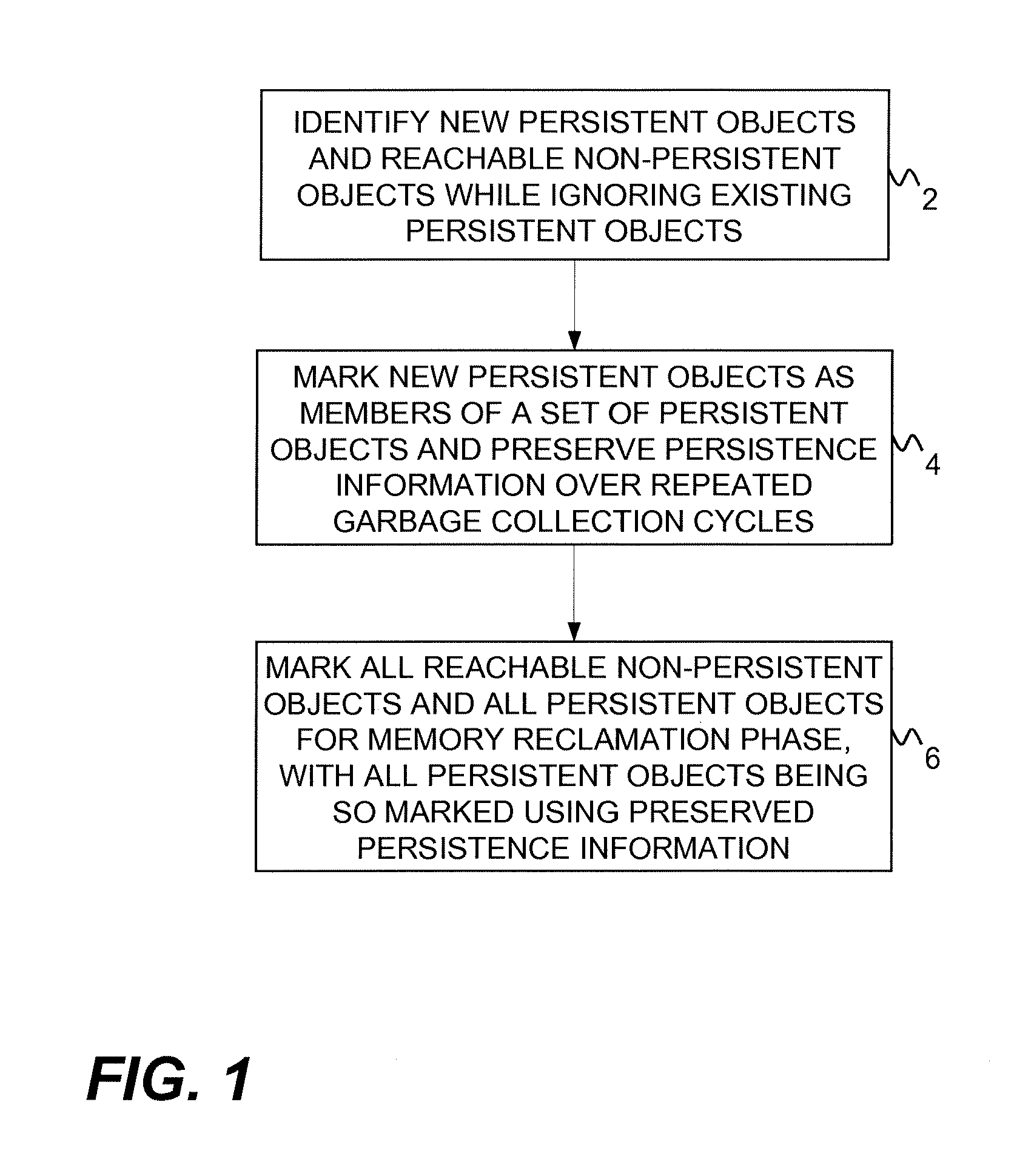Handling Persistent/Long-Lived Objects To Reduce Garbage Collection Pause Times
a persistent/long-lived object and garbage collection technology, applied in the field of computer systems, can solve the problems of affecting the scalability of applications that maintain large amounts of live in-memory data, affecting the scalability of applications, so as to reduce the pause time of garbage collection, avoid repeated scanning of persistent objects during multiple garbage collection cycles, and reduce the effect of pause tim
- Summary
- Abstract
- Description
- Claims
- Application Information
AI Technical Summary
Benefits of technology
Problems solved by technology
Method used
Image
Examples
example embodiment
[0037]Turning now to FIG. 2, an example computer runtime environment 8 is shown wherein a garbage collector 10 performs garbage collection on a heap memory 12 that contains plural objects 14. By way of example only, the runtime environment 8 could be implemented as a Java Virtual Machine (JVM) and the garbage collector 10 could be a Java garbage collector. It should be noted, however, that the present disclosure is not limited to Java runtime environments. Other runtime environments, real or virtual, could also be used.
[0038]The garbage collector 8 initiates object persistence identification by first determining the persistence of GC root objects. Insofar as GC root objects are largely referenced from call stack frames, persistent root objects may be found by considering the persistence of the stack frames on which they reside. Thus, in the embodiment of FIG. 2, object persistence identification begins with the garbage collector 10 scanning through the stack frames 16 of a set of pr...
example hardware
Environment
[0063]Turning now to FIG. 13, an example computing system 50 is shown that may be used to implement the runtime environment 8 and its garbage collector 10. The system 50 supports the execution of program logic 52 (comprising the runtime environment 8) that in turn controls the system 50 to perform various operations. According to one possible embodiment, the system 50 may include one or more processors 54 that operate in conjunction with a main memory 56. As used herein, the term “processors” includes, but is not necessarily limited to, single-threaded or multi-threaded CPUs (Central Processing Units) within single-core or multi-core processor devices (each core being considered a CPU) that are designed to execute program instruction logic, such as software or firmware. The processors 54 may comprise general purpose processors or they may be custom-designed to support the required functions. The memory 56 may comprise RAM (Random Access Memory), ROM (Read-Only Memory), co...
PUM
 Login to View More
Login to View More Abstract
Description
Claims
Application Information
 Login to View More
Login to View More - R&D
- Intellectual Property
- Life Sciences
- Materials
- Tech Scout
- Unparalleled Data Quality
- Higher Quality Content
- 60% Fewer Hallucinations
Browse by: Latest US Patents, China's latest patents, Technical Efficacy Thesaurus, Application Domain, Technology Topic, Popular Technical Reports.
© 2025 PatSnap. All rights reserved.Legal|Privacy policy|Modern Slavery Act Transparency Statement|Sitemap|About US| Contact US: help@patsnap.com



